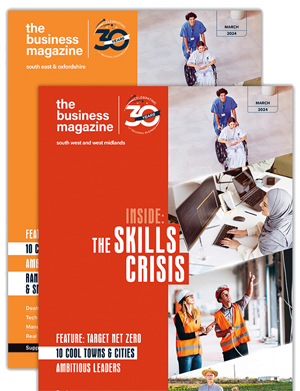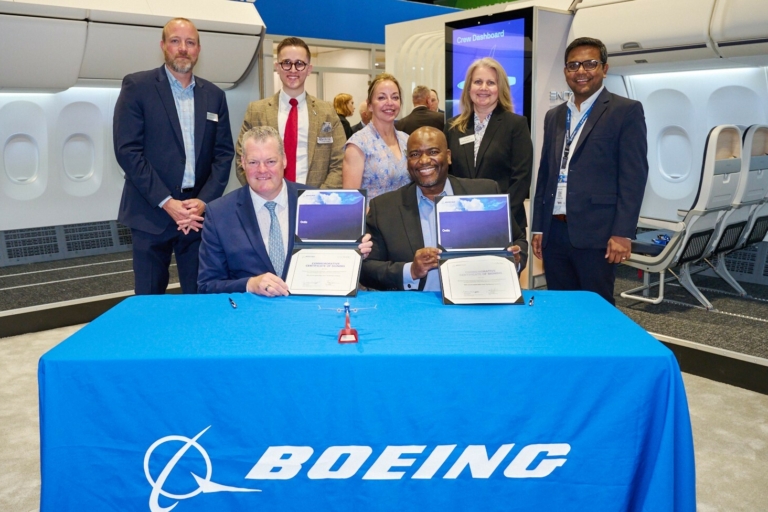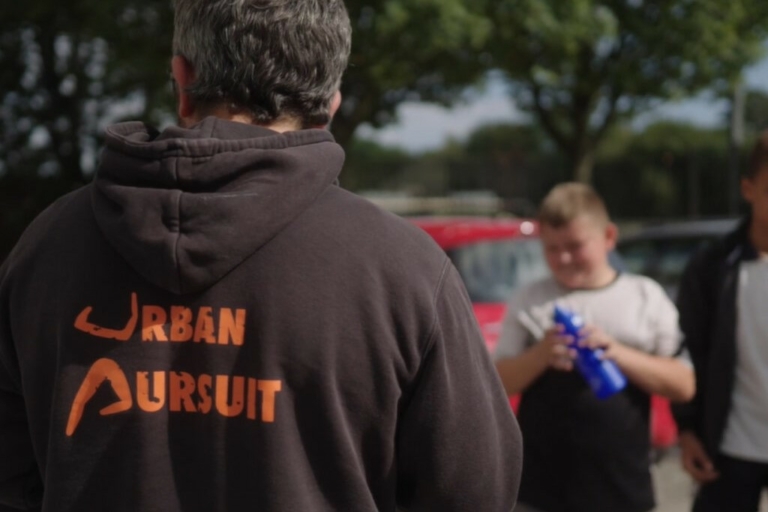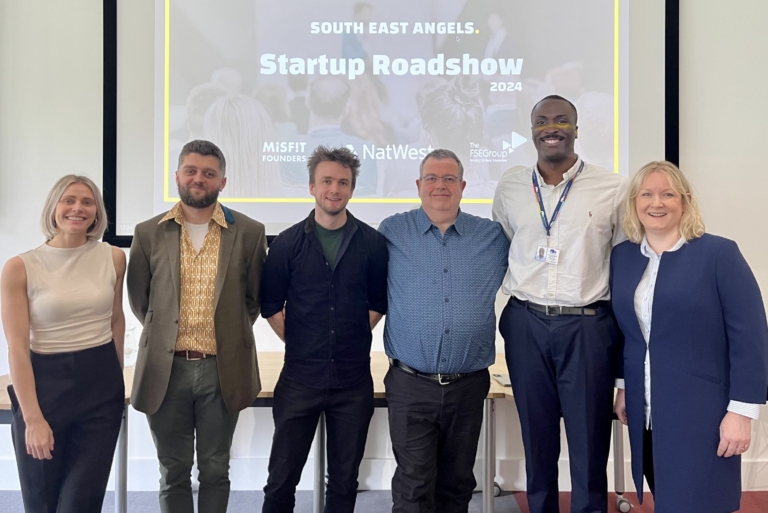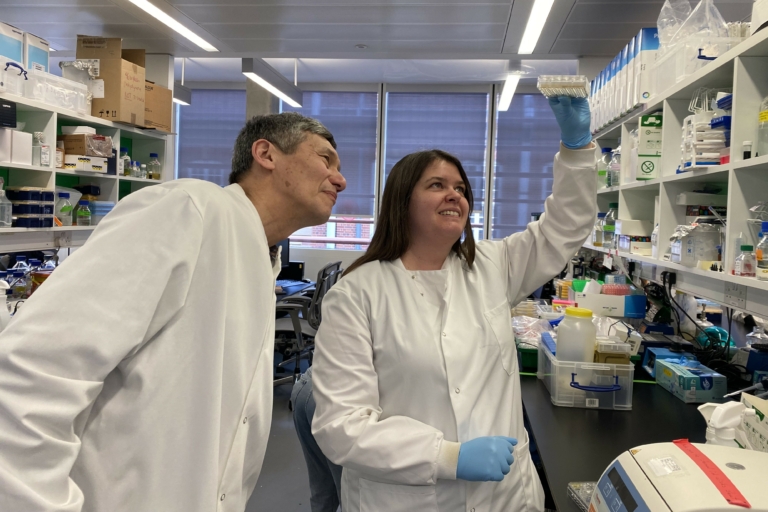Workplace culture
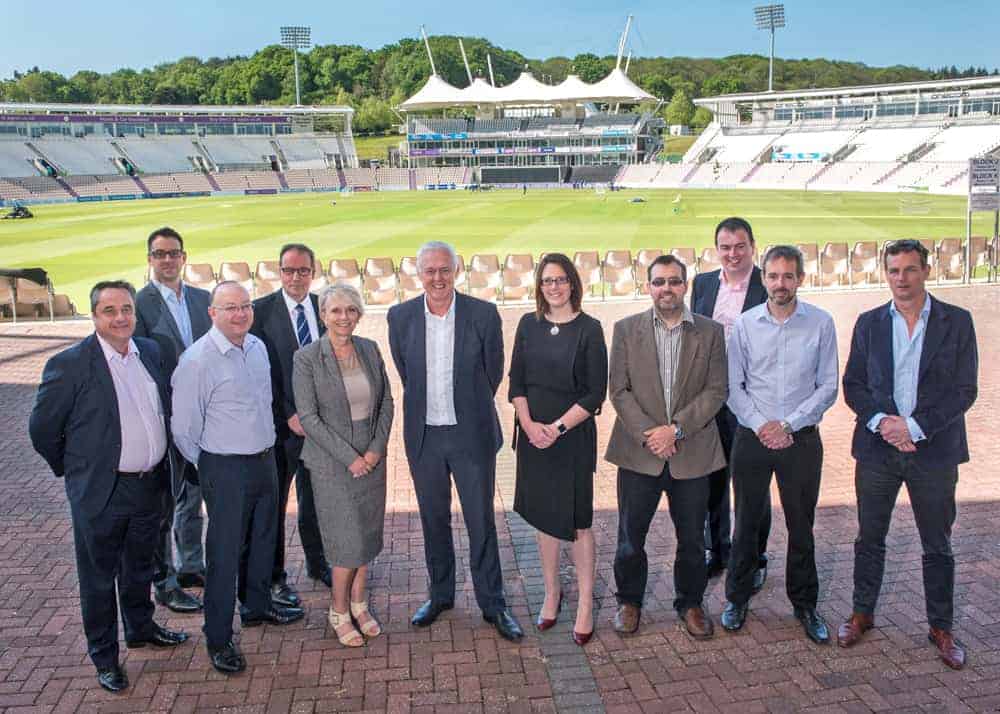
The Hilton at the Ageas Bowl, home of Hampshire Country Cricket Club, hosted The Business Magazine roundtable on workplace culture with views shared on what it means and how it impacts everything from recruitment to performance. Tim Wickham reports on the discussion.
Key questions tackled in the roundtable included how businesses define their workplace culture, to what extent employees are involved in determining that culture, and how a positive culture helps recruitment. A strong culture isn’t just about having a happy workplace; it should also motivate employees. And, increasingly, tackling workplace stress and wellbeing is seen as integral to a successful culture.
Does your culture define your business’ personality?
Mark Gawthorne kicked off the discussion by describing the negative effect on workplace culture when the Serocor Group underwent a major restructuring. “Before, we had a strong, focused culture. It was the DNA of our business, with everyone pulling in the same direction. During our growth we separated into different brands, which ended up diluting the culture and our performance suffered as a result. We’ve got back to where we want now and have learned a lot, particularly that everyone has to live and breathe the culture – top down and bottom up.”
Import Services has around 100 full-time employees, but this figure can triple with agency staff during busy periods, and that presents challenges instilling the company’s values in its workforce. Roger Loveless said: “We have a broad age range – from 19 to 70 – and a lot of non-UK nationals. I agree with Mark’s points about culture being part of your DNA. Our culture is led from the top and is one of the most consistent things in a constantly evolving work environment.”
Technology company Clearvision is continuously learning important lessons about workplace culture, said Simon Wood. “Like a lot of tech companies, we have a relaxed approach to what people wear, no set breaks or hours (outside the core requirement). We’ve got pool tables and games systems to play on. We do this to encourage young talent, although we’re not entirely sure all these initiatives work for everyone.
“We are roughly doubling our size year-on-year and that presents cultural challenges. We are outnumbered by newer recruits who might not ‘get’ our culture and DNA. We went back to basics on fully explaining our culture to new joiners and that seems to be working.”
Changing Simplex-Turbulo’s workplace culture was a challenge for Justin Brooking when he became managing director. “Historically, we are an autocratically-led entrepreneurial business. The need to change our culture is important to me, but I am surprised that many staff preferred the traditional, autocratic environment. I’m trying to create more autonomy by giving people decision-making ability, but not everyone always wants that.”
Simplyhealth has a workforce of around 1,200 people and what struck Debbie Beaven most when she joined the business back in March 2018 was the strong belief in the company’s core purpose of providing everyday healthcare. “It comes across when you talk to employees, irrespective or their role in the business. There is also a strong social conscience with the commitment of 10% of profit going to charitable activities. These two corporate objectives create a powerful and positive culture.”
Ageas Bowl has a mission statement to be ‘beyond first class’ and this drives its culture. Mike Lashmar said: “The Ageas Bowl was a new kid on the block in the world of cricket. What has made the venue successful is thinking differently, going beyond tradition, with some others having to play catch-up. Cricket fans and customers want to be wowed in their leisure time.
“We’ve teamed up with the Hilton Hotel in the management contract to run the hotel and conference centre. Our challenge is that we see ourselves as a family, so maintaining a culture where everyone knows each other and making this a fun place to work is critical to us.”
Offering excellent customer service and having a passion for the natural world are core values at wildlife holidays company Naturetrek. “Everyone mucks in here. But our culture is harder to continue with newer staff – we have to balance core values with things like demand for flexible working. It’s a challenge for us,” said Andy Tucker.
The legal profession traditionally has a hierarchical structure, but big shifts are underway, noted Irwin Mitchell’s Hannah Clipston. “As long as you have the right people and the ambition, you can drive change,” she said. “But if people don’t understand, or believe in, your culture they can be blockers to progress.”
Accountants RSM recruits around 200-250 trainees a year, with a similar number of lateral hires. Paul Anthony said: “That’s about 500 people coming in to a workforce of around 3,500, which is quite significant. It means we can’t be too prescriptive in saying what is our culture. What we do is driven by our people. Our corporate values are there for guidance, and we give people freedom in how they deliver the levels of service that our clients expect.”
Having the right culture is key to recruiting and retaining people at HSBC. “We have a group vision and strategy, but that only becomes a reality if people live it day to day,” noted Anthony Reed. “Your culture goes a long way in determining the kind of people you can recruit. People chose the type of company they want to work with, not work for. One of the biggest challenges is being mindful and inclusive to everyone. It’s jeans and T-shirt versus suit and tie.”
What input do employees have on your culture?
Beaven: “We run quarterly online Vibe employee surveys and have strong employee consultation groups feeding improvement ideas in to management. The Vibe score helps us track how we incrementally improve in all aspects of our business. Like many organisations we are improving our response to and management of stress related issues, many of which are due to external factors.”
Wood: “Three years ago we started Cheervision, a staff-run scheme with a pre-approved annual budget for staff to spend however they want on anything they want. From social events to new office improvements. It has received mix responses – not all the things we’ve done were a success. Some things can create disengagement, as well as engagement. It’s impossible to please all of the people, all of the time. Overall though, it has been a force for positive change.”
Gawthorne agreed that social events help define your culture, but getting the right balance can be tricky. “Not everything is going to work for everyone. One good source of feedback is when senior managers attend social events where people are more likely to speak their mind. I think you have to find what social events work best for your business and to be adaptable, with choices like an evening out drinking as well as family-oriented events, like barbecues.”
Communicating your culture
Brooking: “We are thinking about setting up mentor groups with our operational directors and non-line managers that will focus on making sure everyone understands our culture.”
Irwin Mitchell already does something like this, said Clipston: “We have cross-department, cross-level mentor groups. We also have a coaching scheme and find that monthly one-to-ones work well. A lot has to do with open communications, which makes it easier to identify and sort out problems before they grow.”
Using external experts helped Serocors’ senior management focus on improving how they deliver key messages. Gawthorne said: “We ran facilitated sessions for our group’s managing directors. The facilitator watched behaviours and body language and gave feedback. A trail hike in the Swiss mountains put senior executives under stress. Both were really useful in seeing good teamwork as well as who wasn’t supporting colleagues. You then have to consider that senior managers might also be unsupportive of their own team members and that would negatively affect the culture. The sessions helped us see how we can develop the way senior managers think and act.”
For Tucker, it’s a question of nurturing internal brand ambassadors. He said: “I like to have someone in each of our teams who, if you cut them, would bleed Naturetrek. They act as mentors, can sort out problems quickly, and communicate to colleagues what we’re doing so they are kept up to date.”
Lashmar said Ageas Bowl applies a familiar management style to make sure staff are kept up to date. He said: “We’ve always believed in ‘managing by wandering around’, face-to-face communication is essential. It keeps our finger on the pulse and we’re still small enough to be able to do that. As a director, that’s a key way in finding out what’s going on at the coal face, and it helps you spot things earlier.”
Clipston added: “It’s my responsibility as a leader to say if someone is doing something wrong. That can be a difficult thing to communicate, but you can pick up on issues if you are a walking around and in regular contact with your people.”
Loveless said Import Services had a similar ‘open door’ policy. “We have had to find different solutions to managing our culture, especially with about half our staff non-UK residents. We have to be sensitive. For some people, their own culture is not to criticise management, so they won’t ask questions at open forums. We have to find ways to engage with them informally, because it’s critical we hear their views. I think being sensitive to personal cultures generates greater respect for your business culture. Our approach appears to be working – our first survey on how employees were feeling had a 40% response rate; that’s now up to about 80%.”
How culture influences recruitment
Wood: “People go online and check out your business on your website and social media before they apply. That’s why a lot of tech companies invest in making their websites look cool. But there can be an expectation gap – a difference between what you say you are and what you actually are.”
Gawthorne: “We carry out social audits that tell us what people like and don’t like about us. If you want to attract talent then your marketing and HR departments should work together, so you use marketing expertise in your recruitment.”
Reed agreed: “Your message has to be believed, it has to be authentic. And you also have to believe it yourself, or else you are being counter-productive.”
A good culture empowers people
Gawthorne: “You can be happy at work but lack motivation. Sometimes your culture needs to feature both a carrot and a stick dependent on the teams need, so people can see there is something at the end to reward their effort and commitment.”
Irwin Mitchell aims to provide employee motivation by matching job roles to people with the most relevant skills. Clipston said: “We have tried to move away from having one job description for a role saying ‘this is what you do’. Instead, we try to look more carefully at what people like doing and what they are good at. We tailor our roles to our people, without ignoring development areas. That way, it’s easier to get the motivation and it also encourages greater diversity at the firm.”
There’s a similar emphasis on career mobility at Import Services, said Loveless: “For us, motivation is about demonstrating mobility for people in their career. They can see they are at a certain level and feel they can become more senior. The manager at our largest site, who is responsible for 200 people, started as a forklift driver. The takeaway for people is massive; they can see what is possible. It gives me a lot of satisfaction seeing these people grow in the business and they are great role models for us.”
HSBC offers flexibility to maintain motivation in its workforce. Reed said: “We have many talented people who have different working patterns and who can bring much to our culture. We have to be open about finding out what motivates them and what flexibility we need to attract and retain them.”
A culture of stress?
The group agreed that a workplace culture that doesn’t adapt to address modern pressures, such as stress, inevitably becomes weaker and less effective.
Loveless: “We’ve invested in health, safety and wellbeing initiatives. We run a stress awareness programme that has helped improve things. It’s more cost effective to deal with a problem before it leads to staff absences.
“I think the stress issue begins and ends with management, who need to take the initiative. That’s because people can be reluctant to put up their hands and say they are stressed as they may worry it is a sign of weakness. Our average number of sick leave days is below the national average and we think that’s a direct result of educating our managers and trying to get ahead of the problem.”
Gawthorne: “We’re driven by sales targets, so stress can be a problem. We provide health and stress training for managers and offer an independent helpline for staff to resolve issues as early as possible.”
Anthony: “We give the issue of wellbeing a lot of thought. Employee mentors keep an eye on things like stress. I know one company that uses in-house consultants to focus on prevention by engaging with staff and suggesting actions they can take. After all, we each have a personal responsibility to keep ourselves fit and healthy.”
Let’s get physical
There’s a growing consensus that a focus on both physical and mental health is essential to corporate culture.
Lashmar: “Fitness is certainly an important element with our employees. But it’s difficult as work demands mean we work long days, making it tough to find time to keep fit. We encourage staff, we offer free healthy lunches, and have a decent amount of space to walk around at the Ageas Bowl and make gym space available as well as organising plenty of events.”
Wood: “I’ve tried a few walking meetings around the perimeter of our business park. They’re good for short catch-up meetings as they stop you deviating from the main points. But it’s hard taking notes.”
Tucker: “We’re based in lovely countryside. Some people go jogging at lunchtime; others stay glued to their desks. You can’t dictate to people.”
Brooking: “Bike schemes are good. We buy the bikes and staff rent them from us.”
Beaven: “We have free fruit delivered and the company sponsors fundraising activities, the biggest of which are the “Great Run” series.”
Anthony: “We have ‘fruity Wednesdays’, offer staff retail vouchers, and a host of other benefits. But the traditional salary/pension package still seems to be really important to many people.”
Gawthorne: “We try to incentivise people to do more exercise, for example, by supporting charity fundraising activities like running half marathons, bike challenges etc. But equally, we raise money from baking and cake sales. From a company culture perspective, offering a range of fundraising events means everyone feels part of doing something good even if physical challenges are not their thing.”
Is presenteeism part of your culture?
Attention turned to the modern-day challenge of people feeling they can’t take time off work. It’s something the panel thought could be addressed by adjusting your culture, with ideas like re-looking at annual leave provision and changing approaches to flexible working. The discussion closed with an exchange of views on what to do when you receive a late-night email from your boss.
Loveless: “One thing people probably value most is their holiday time. Providing more annual leave can have a big positive impact on reducing stress at work.”
Brooking agreed. “We are trying to introduce longer annual leave, but it takes time to change company thinking.”
Beaven: “I am aware that there was a presenteeism survey, which revealed that it was too high in some parts of the business. Emails can be a source of stress and it is important to understand the impact of sending emails late at night; even if we tell people not to read the emails, the mere fact that they have got an email, may distract them from what should be their home time. Technology has ways of ensuring we avoid work distractions when at home. Time away from work and emails is important for mental wellbeing”
Anthony: “There needs to be an understanding that some people work best and are more productive later in the day, so you have to allow for this.”
Gawthorne said: “The challenge is to accept and manage how people work flexibly. One of our directors leaves work every day at 5.30pm. He goes home to put the kids to bed so he can enjoy some quality family time, then he carries on working. You do have to be clear that you don’t expect others to be available in the evening, when they want to be free of work.”
Wood: “The traditional 9-5 working day is dying. I’d say we are in-between in the process of changing to being a more flexible workplace. Our CEO often emails at 3am – but doesn’t expect anyone to respond immediately. People need to make their technology work for them, not the other way around.”
Participants
Paul Anthony: Partner, RSM
Debbie Beaven: Finance director, Simplyhealth
Justin Brooking: Managing and finance director, Simplex-Turbulo Group
Hannah Clipston: Partner, Irwin Mitchell
Mark Gawthorne: CFO, Serocor Group
Mike Lashmar: Group FD, Ageas Bowl
Roger Loveless: Operations and HR director, Import Services
Anthony Reed: Area director, Hampshire and Dorset corporate banking, HSBC
Andy Tucker: General manager, Naturetrek
Simon Wood: Director, Clearvision
David Murray: Founder and publisher of The Business Magazine, chaired the discussion
sponsors

